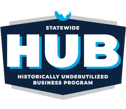In blog #2 of our series about cost-cutting measures hospitals are taking in order to comply with USP <800>, we’ll discuss another area hospitals are trying to address manually - Assessments of Risk.
The USP <800> Requirement Maze
USP <800> requires healthcare facilities to create and maintain (the operative word here) a list of all hazardous drugs (HDs) in use at their facility. USP <800>suggests facilities create their initial list based on drugs that may pass through their facility and are on the NIOSH List of Antineoplastic and Other Hazardous Drugs in Healthcare Settings 2016. However, hospitals must continually update their HD lists with new FDA-approved drugs not on the current NIOSH 2016 HD list. USP <800> states that “if a new drug, which NIOSH has not yet considered, mimics existing HDs in structure or toxicity, it is also considered hazardous.” The number of newly FDA-approved drugs that meet the criteria to be considered hazardous can be upwards of 40 additional drugs per year.
Assessment of Risk: Beyond the HD List
In some cases, USP <800> requires healthcare facilities to perform and document an Assessment of Risk (AoR).
Which drugs require an Assessment of Risk? If a hospital is following the recommendations in the “Table of Control Approaches” as spelled out in NIOSH’s Managing Hazardous Drug Exposures: Information for Healthcare Settings, then documentation of an AoR is not required.
However, an AoR is required for NIOSH-approved drugs IF the facility has identified the drug as safe to handle using less protection than NIOSH recommends for that drug’s group, dosage form, and handling activity. If this is the case, an AoR should be performed and documented for those drugs and their dosage forms used within the facility. About 60% of hazardous drugs available on the market may fall into this category and would, therefore, require an AoR.
Hospitals must also perform an AoR for any drug deemed hazardous that is not already included on the NIOSH List of Antineoplastic and Other Hazardous Drugs in Healthcare Settings. See above for criteria used to determine if a drug is hazardous.
What information must be documented in an AoR? USP <800> does not specify a particular format for the AoR, only that it must include at a minimum:
- Hazardous Drug Type:
- Does the drug fit into the following categories: Antineoplastic, Non-Antineoplastic, or drugs that primarily pose a reproductive risk?
- Dosage form:
- What form is the drug administered? Tablets, capsules, injections, etc.?
- Risk of exposure:
- What is the risk of exposure for healthcare workers who come into contact with the drug, i.e., through inhalation, touch, injection, or ingestion?
- Packaging:
- How is the drug packaged, labeled, transported and disposed of?
- Manipulation:
- Does the drug undergo any changes to its packaging, formulation, or dosage form? Are there alternative containment strategies and/or work practices for this drug?
Considering each dosage form for the HD must undergo the above review, it is clear that the AoR is a massive undertaking. The bad news? The AoR process is never really over because USP <800> requires healthcare facilities to update and document each AoR every 12 months. Because new HDs become available throughout the year, hospitals find themselves in a constant state of AoR creation and updates.
“It makes me want to vomit.”
After all of that background, let’s get to the issue at hand. We are hearing from healthcare facilities of all sizes and across the country that their manual system for creating and managing AoRs is unsustainable. The scary part many have realized is that they thought it was under control until they returned to the initial AoRs and noticed that information was incomplete or outdated, which could result in a citation or even a costly fine now that USP <800> is enforceable. Worse than those dire financial consequences is that a healthcare worker could be unknowingly at risk of exposure to hazardous drugs.
Many are concerned about updating their HD list to in accordance with the NIOSH 2020 list. The newest version of the NIOSH list completely changes the breakdown of HDs from three tables to two, which NIOSH 2020 will now categorize by hazard instead of function. This massive update will require hospitals and healthcare facilities also to reclassify the HDs on their list.
Healthcare facilities must also identify what drug information has changed between NIOSH 2016 and 2020 to update that information in their AoRs. The word tedious doesn’t even seem to cover it. When you consider how many HDs are on your list currently, how long will this process take, and who will need to be involved in addition to your designated person?
Another significant area for improvement with the manual maintenance of AoRs is the method used to document and track HDs. Surprisingly, many hospitals and even large systems of multiple facilities still use spreadsheets to document their hazardous drugs, link to AoRs and other required safety information. In our presentations, we share an example of an HD spreadsheet and have gotten visceral reactions like “I want to cry.” and “That makes me want to vomit.”
In addition to the effort necessary to create and maintain a spreadsheet, daunting security risks are inherently involved, including unauthorized access and updates. Many people need access to the information housed within the HD list, but who can update it, and how can you audit what changes were made and by whom? If the document is password protected, who is the keeper of the password? Will that person still be there next week, next month, or next year?
If you’re a pharmacist or a designated person in charge of merging formularies with a recently acquired hospital, your challenges around AoRs are exponential. Not only do you have to meet the basic USP <800> requirements, but you also have to probe through another facility’s or system’s AoR process and merge it with your own or create an entirely new AoR process.
We believe that once hospitals undergo an inspection and find that their manual process for creating and maintaining AoRs did not meet the standard required by USP <800>, hospitals and healthcare systems will begin dedicating budget to implement automated systems allowing the overworked pharmacists and designated persons to breathe a sigh of relief and hopefully ditch the spreadsheet once and for all.
If your organization is considering addressing the USP <800> requirements around AoRs and ultimately improving your current system, we’d love to talk. We’ve helped many healthcare facilities and systems move from a manual AoR process to our automated system in Rhazdrugs and can help you too. Reach out at info@rpharmy.com.
In the meantime, our blog is a free resource that contains several articles on AoRs, including a recap of a free webinar session we hosted earlier this year on AoRs.


